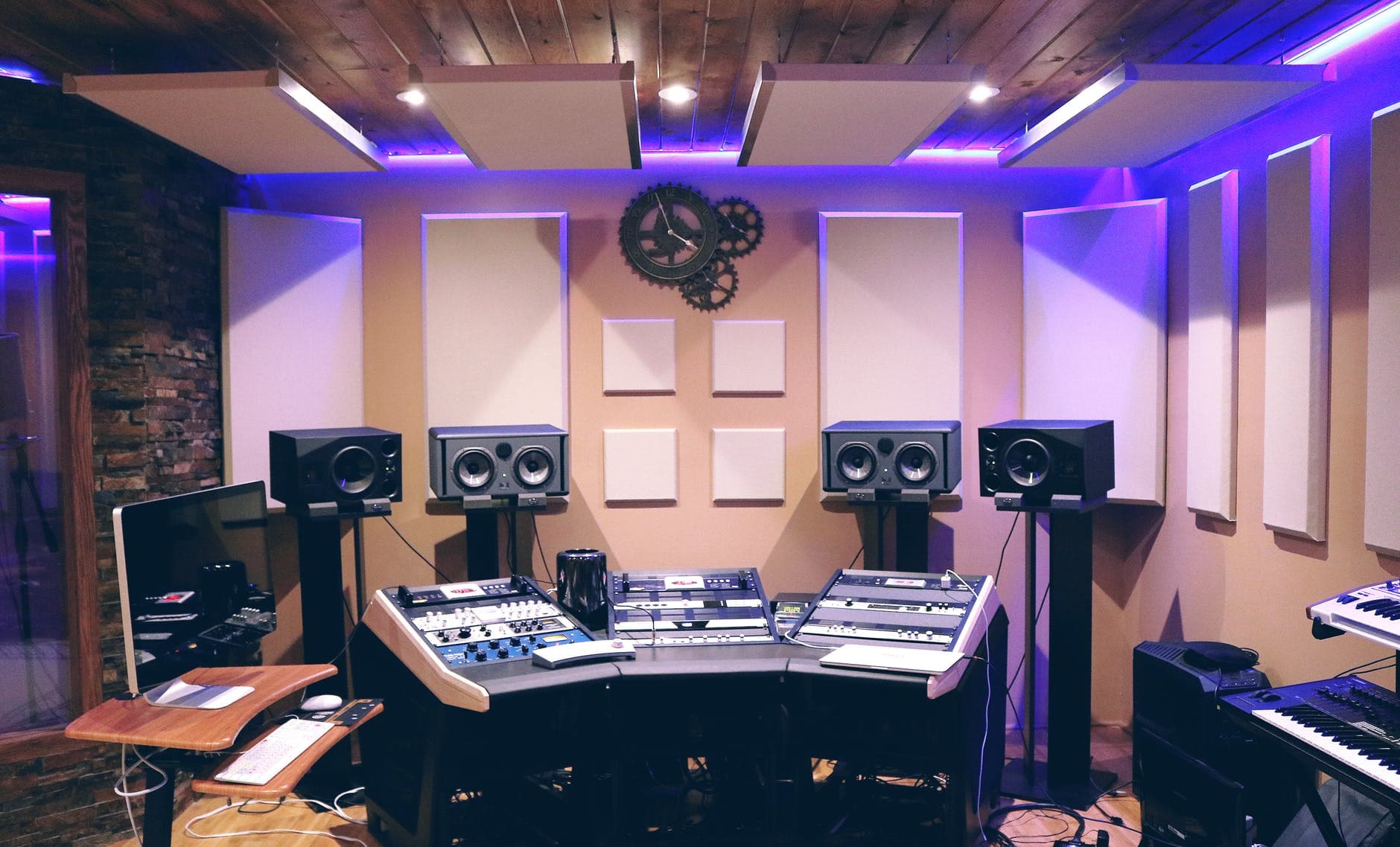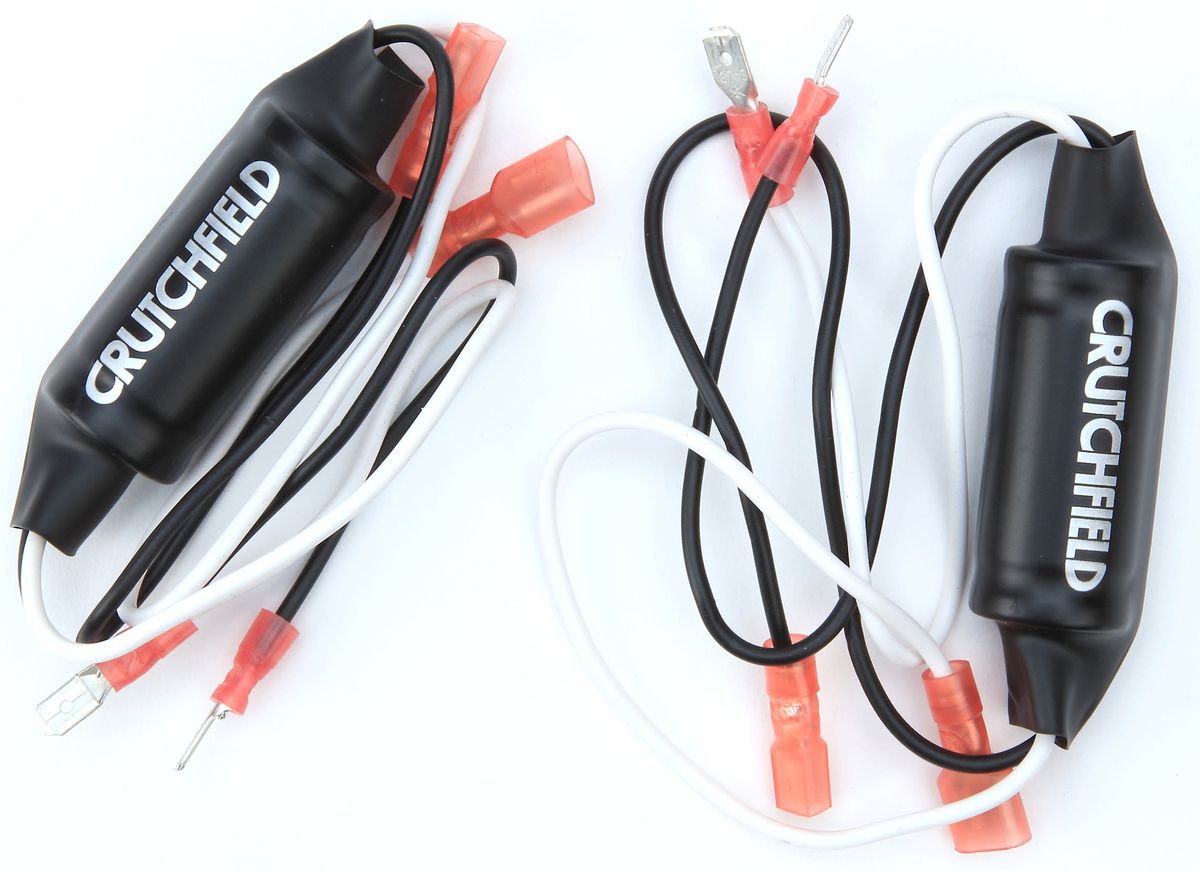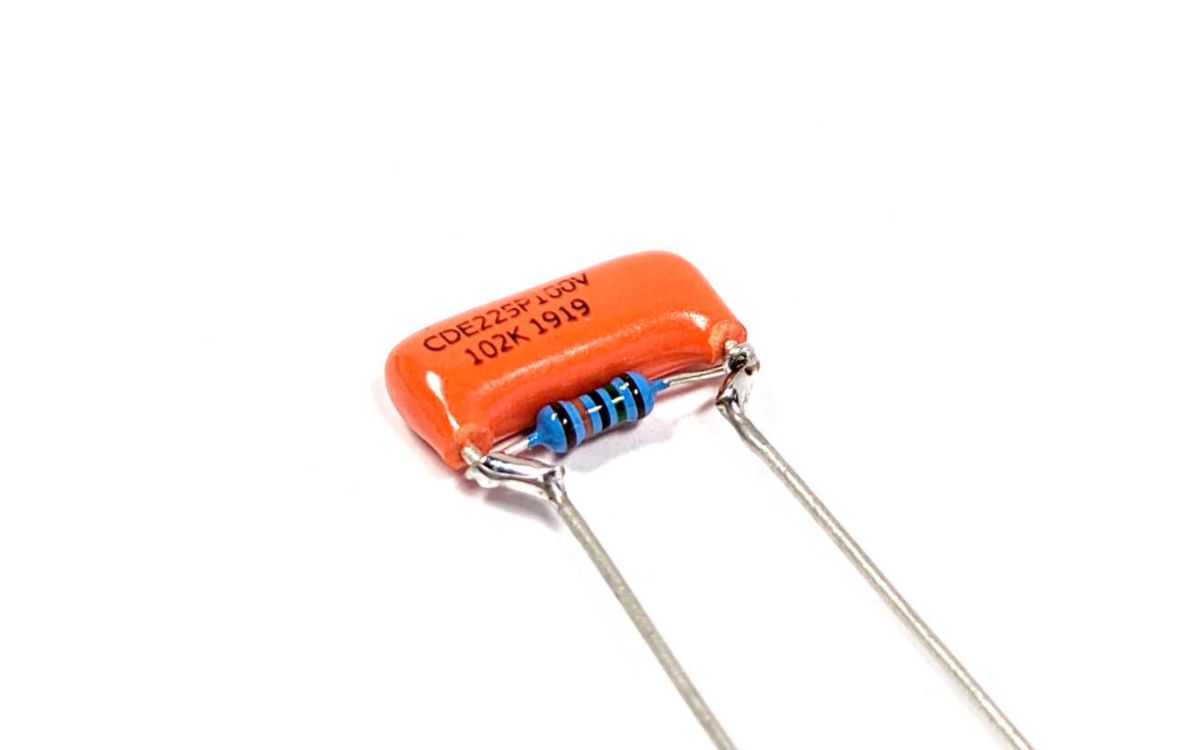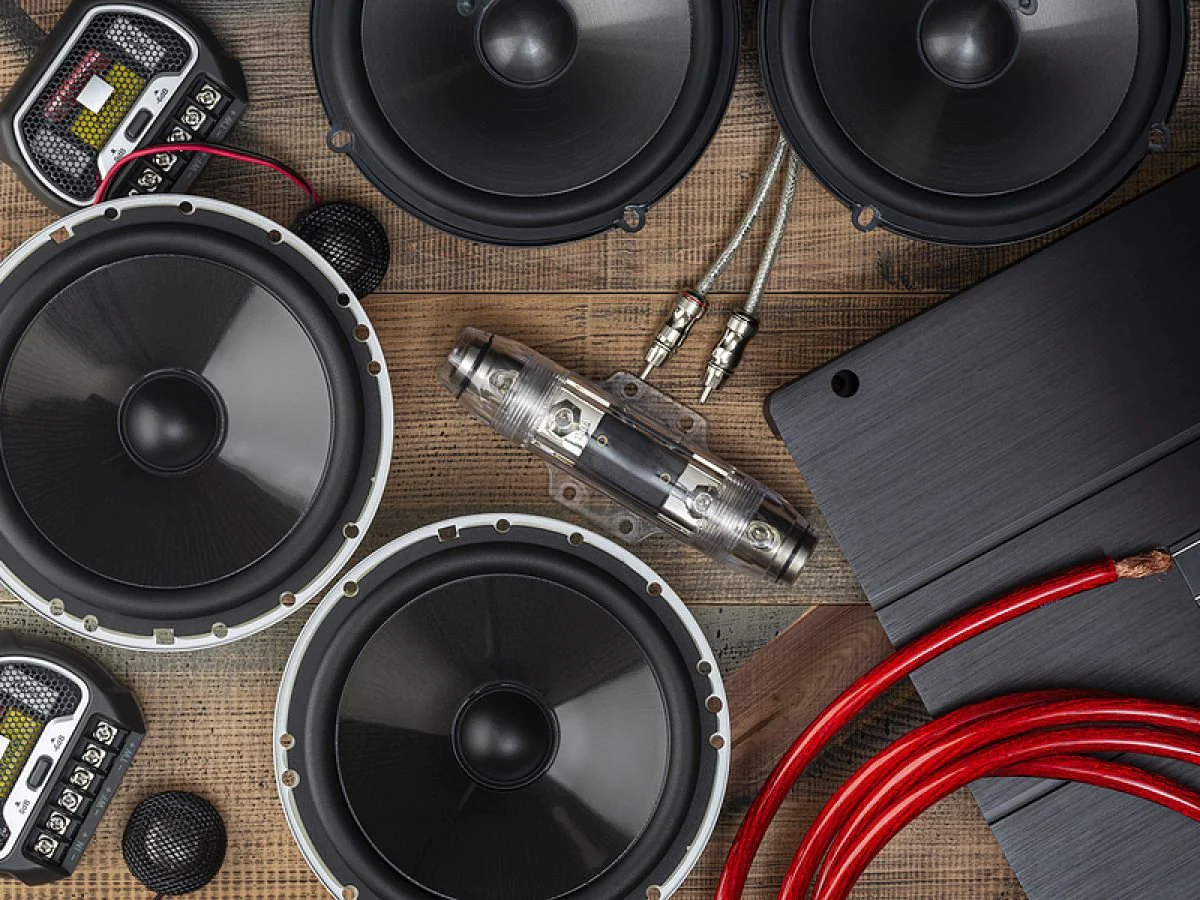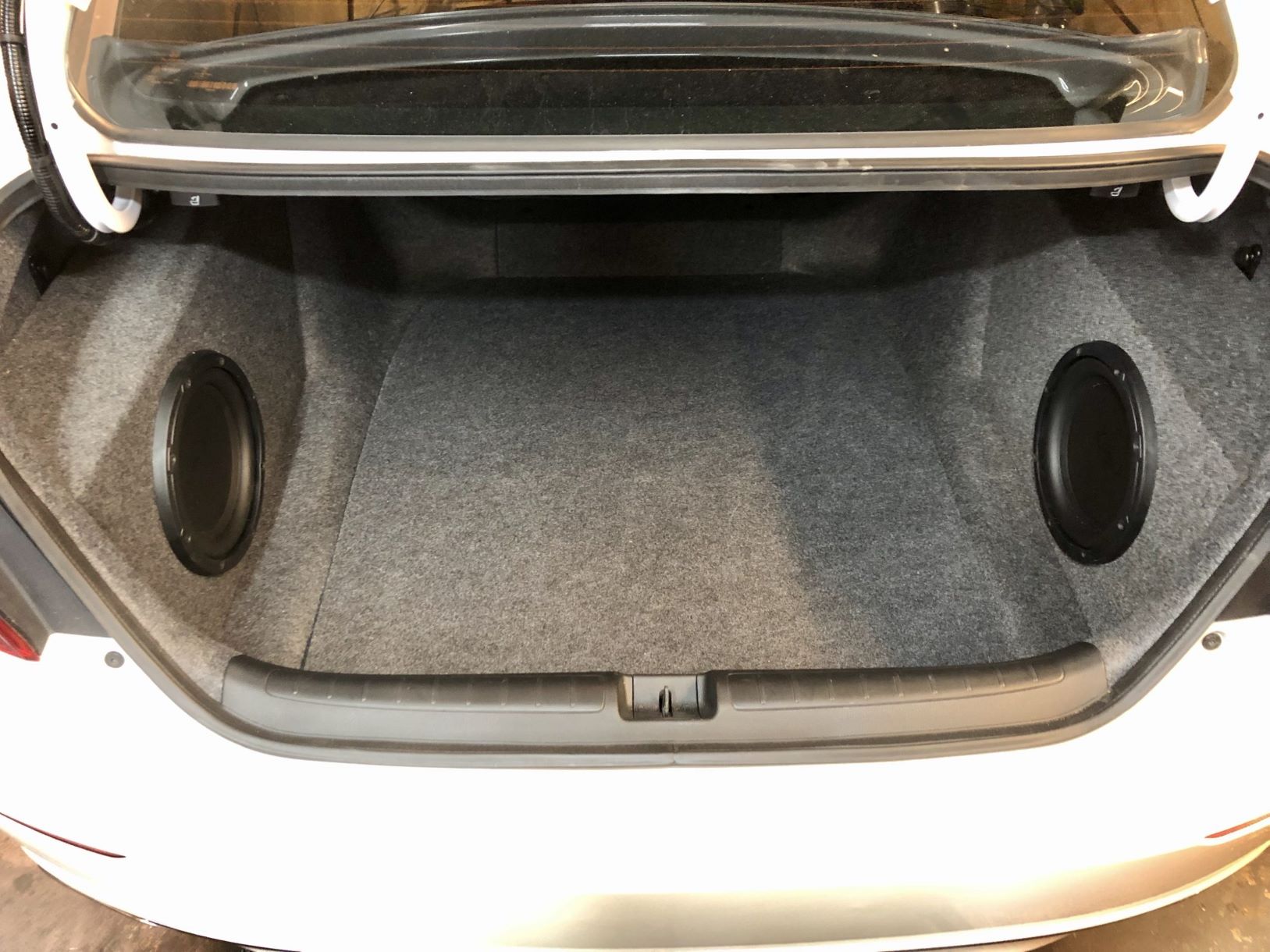Home>Production & Technology>Soundproofing>How To Install Soundproofing
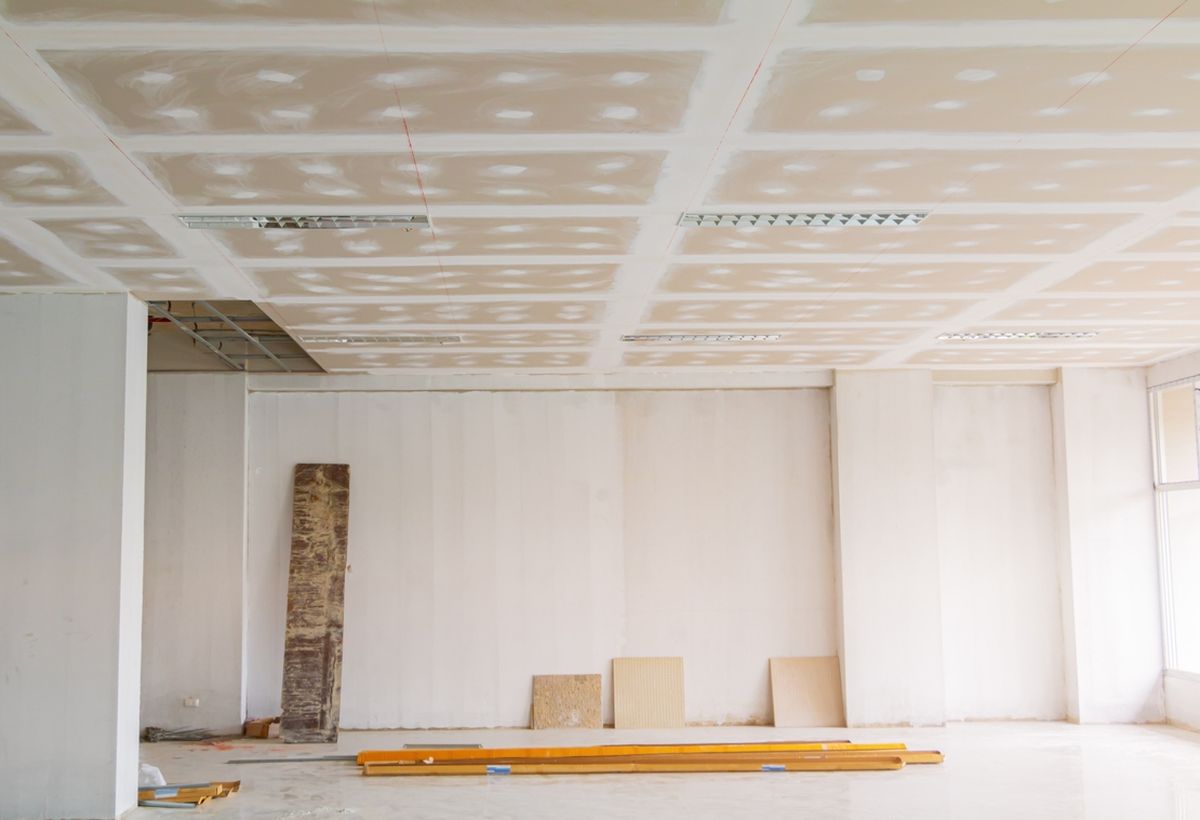

Soundproofing
How To Install Soundproofing
Published: January 26, 2024
Learn how to install soundproofing in your home and enjoy a quieter environment. Enhance your comfort and reduce noise disturbances with our step-by-step guide.
(Many of the links in this article redirect to a specific reviewed product. Your purchase of these products through affiliate links helps to generate commission for AudioLover.com, at no extra cost. Learn more)
Table of Contents
- Introduction
- Materials Needed
- Step 1: Assessing the Room
- Step 2: Identifying Sound Leakage Points
- Step 3: Sealing Gaps and Cracks
- Step 4: Installing Soundproof Curtains
- Step 5: Adding Weatherstripping to Doors and Windows
- Step 6: Installing Acoustic Panels
- Step 7: Insulating Walls and Ceilings
- Step 8: Soundproofing Floors
- Step 9: Using Soundproofing Caulk
- Step 10: Testing and Evaluating Soundproofing Results
- Conclusion
Introduction
Welcome to your ultimate guide on how to install soundproofing! Whether you’re a musician looking to create a quiet practice space, a homeowner wanting to reduce noise from outside traffic, or someone who simply craves a more peaceful environment, soundproofing can make a world of difference. Unwanted noise can be a constant source of frustration, interrupting work, sleep, and relaxation. Luckily, with the right techniques and materials, you can significantly reduce noise leakage and create a serene and tranquil space.
In this article, we will walk you through the step-by-step process of installing soundproofing in your home or space. From assessing the room to identifying sound leakage points, sealing gaps and cracks, and utilizing soundproofing materials, we’ll cover it all. By the end of this guide, you’ll have the knowledge and confidence to tackle your soundproofing project and enjoy the benefits of a quieter environment.
Before we dive into the specific steps for soundproofing, it’s important to understand that soundproofing is a combination of science, strategy, and creativity. Each space is unique, and the level of soundproofing required will depend on factors such as the type of noise, the construction of the room, and your budget.
It’s essential to approach soundproofing with realistic expectations. While soundproofing can significantly reduce noise, it’s nearly impossible to eliminate it entirely. However, by following the techniques outlined in this guide, you can achieve a noticeable reduction in noise levels and significantly improve the overall tranquility of your space.
So, grab your tools and let’s get started on transforming your home or workspace into a haven of peace and quiet!
Materials Needed
Before you begin your soundproofing project, it’s important to gather the necessary materials. The specific materials you’ll need may vary depending on the unique characteristics of your space and the soundproofing methods you choose to implement. However, here are some common materials that you might find useful:
- Acoustic Caulk: This specialized caulk is designed to seal gaps and cracks, preventing sound leakage. Look for a high-quality acoustic caulk that will provide a reliable barrier against noise.
- Acoustic Panels: These panels are designed to absorb sound waves, reducing echo and reverberation in a room. They are typically made of dense foam or fiberglass and can be installed on walls or ceilings.
- Soundproof Curtains: These heavy-duty curtains are made with dense materials and multiple layers to block out noise. They can be an effective solution for reducing sound transmission through windows and doors.
- Weatherstripping: Weatherstripping is used to seal gaps around windows and doors, preventing air and sound leakage. It comes in various materials such as rubber, vinyl, or foam, and can be easily installed.
- Mass Loaded Vinyl (MLV): MLV is a dense and flexible material that can be used to create barriers against sound. It is often installed between layers of drywall or under flooring to block sound transmission.
- Green Glue: This noise-damping compound is applied between layers of drywall to enhance soundproofing. It converts sound energy into heat, reducing sound transmission.
- Door Sweeps: These are rubber or brush strips that are installed at the bottom of doors to create a tight seal and prevent sound leakage.
- Insulation: Insulation can help absorb and dampen sound. Look for insulation materials with good acoustic properties such as mineral wool or cellulose insulation.
- Sealing Tape: This tape is used to seal gaps and cracks in walls, windows, and doors, preventing sound leakage. Look for a tape specifically designed for soundproofing purposes.
- Soundproof Underlayment: If you’re soundproofing floors, consider using a soundproof underlayment, which helps reduce impact noise and vibrations.
These are just a few of the many materials available for soundproofing. Depending on your specific needs and preferences, you may require additional items such as soundproofing gaskets, door jamb seals, or even soundproofing paint. It’s recommended to consult with a soundproofing professional or do thorough research to determine the best materials for your particular soundproofing project.
Step 1: Assessing the Room
Before you start the soundproofing process, it’s important to assess the room and identify the areas that require attention. Take note of any sources of external noise, such as busy roads, neighbors, or nearby construction sites. Also, consider any internal noise sources, such as appliances, HVAC systems, or noisy plumbing.
Next, evaluate the construction of the room. Are there any gaps, cracks, or openings that could contribute to sound leakage? Common areas to check include windows, doors, electrical outlets, and ventilation ducts. Additionally, analyze the composition of the walls, ceiling, and floors. Are they thin and easily transmit sound, or are they already insulated?
Consider the purpose of the room and the desired level of soundproofing. For example, if it’s a home office or recording studio, you may require a higher level of soundproofing compared to a bedroom or living room. It’s important to have a clear understanding of your goals and expectations before proceeding with the soundproofing process.
During the assessment, take measurements of the room and make note of any specific requirements or constraints. This information will help you determine the quantity of materials needed and plan the soundproofing strategy.
By assessing the room thoroughly, you’ll have a better understanding of the soundproofing challenges you’ll face and be able to develop a more effective plan to address them. With this initial evaluation complete, you’re now ready to move on to the next step: identifying sound leakage points.
Step 2: Identifying Sound Leakage Points
Once you have assessed the room, it’s time to identify the specific areas where sound is entering or escaping. These sound leakage points are crucial to address in order to effectively soundproof the room.
Start by inspecting windows and doors. Check for any gaps or cracks around the frames, as well as the seals and weatherstripping. These are common areas where sound can easily seep through. You may need to replace old or worn-out weatherstripping or add additional seals to create a tighter barrier against noise.
Next, examine electrical outlets and switches. These openings in the walls can be a source of sound leakage. Install foam gaskets behind outlet and switch covers to help reduce noise transmission.
Don’t forget to check for gaps or openings around plumbing pipes, ventilation ducts, and ceiling fixtures. These areas are often overlooked but can contribute significantly to sound leakage. Seal any gaps or cracks with acoustic caulk or use specialized soundproofing materials designed for these specific fixtures.
Take a close look at the walls, ceilings, and floors. Look for any signs of cracks or weak points where sound can easily penetrate. Wall penetrations, such as cable outlets or air vents, can also be sound leakage points. Seal these openings with acoustic caulk or use soundproofing putty pads to reduce sound transmission.
During this step, it’s important to be thorough and meticulous. Take your time to thoroughly inspect the room and identify all potential sound leakage points. By addressing these areas, you’ll be able to create a more effective soundproofing barrier.
Once you have identified the sound leakage points, you can move on to the next step: sealing gaps and cracks.
Step 3: Sealing Gaps and Cracks
Now that you have identified the sound leakage points in the room, it’s time to seal the gaps and cracks to prevent sound from entering or escaping. Properly sealing these areas is a crucial step in effective soundproofing.
Start by gathering acoustic caulk and sealing tape. Acoustic caulk is specifically designed to provide an airtight and soundproof seal, while sealing tape is used to cover larger gaps or cracks.
Begin with the windows and doors. Apply a generous amount of acoustic caulk around the frames, ensuring there are no gaps for sound to penetrate. If there are larger gaps or cracks, use sealing tape to cover them before applying the caulk. Pay attention to both the interior and exterior sides of the windows and doors to create a complete seal.
Move on to electrical outlets, switches, and any other wall fixtures. Remove the cover plates and apply acoustic caulk around the edges of the openings. This will help dampen any sound leakage through these points. Reinstall the cover plates once the caulk has dried.
Inspect the walls, ceilings, and floors for any cracks, gaps, or weak points. Fill these areas with acoustic caulk to ensure a tight and soundproof seal. Use sealing tape if the gaps or cracks are larger. Take your time during this step to ensure thorough coverage.
If you have any wall penetrations, such as cable outlets or air vents, apply acoustic caulk around these fixtures. This will help minimize sound transmission through these openings.
Once you have sealed all the gaps and cracks, allow the acoustic caulk to dry according to the manufacturer’s instructions. This will ensure its effectiveness in creating a soundproof barrier.
Sealing gaps and cracks is an essential step in soundproofing as it helps eliminate one of the main sources of sound leakage. By properly sealing these areas, you’ll significantly improve the overall soundproofing of the room.
With the gaps and cracks sealed, you’re ready to move on to the next step: installing soundproof curtains.
Step 4: Installing Soundproof Curtains
Soundproof curtains are an effective and convenient way to reduce noise transmission through windows and doors. They are specifically designed with dense and thick materials to absorb and block sound waves. Installing soundproof curtains can significantly improve the soundproofing capabilities of a room.
Here’s how you can install soundproof curtains:
- Measure the width and height of the window or door that you want to cover with soundproof curtains. Make sure to measure both the inside of the frame and the outer edges.
- Select soundproof curtains that are appropriately sized for your measurements. It’s important to choose curtains that are wider and longer than the window or door to provide maximum coverage.
- Install a curtain rod or track above the window or door. Ensure that it is securely attached to the wall or frame.
- Attach curtain hooks or rings to the curtains, if they don’t come pre-attached. Slide the curtains onto the curtain rod or track.
- Adjust the curtains to the desired height and width, ensuring that they fully cover the window or door. There should be minimal gaps or spaces for sound to pass through.
- If necessary, install curtain tiebacks or holdbacks to keep the curtains open when not in use. This can provide flexibility in controlling the amount of light and noise entering the room.
- Repeat the process for any additional windows or doors where you want to install soundproof curtains.
Soundproof curtains not only help reduce noise but also have additional benefits such as blocking out light and providing insulation. They come in various colors, styles, and thicknesses, allowing you to choose curtains that match your decor while effectively blocking unwanted noise.
It’s important to note, however, that soundproof curtains alone may not provide maximum soundproofing. They work best when combined with other soundproofing techniques such as sealing gaps and using other sound-absorbing materials.
With your soundproof curtains installed, you’re ready to move on to the next step: adding weatherstripping to doors and windows.
Step 5: Adding Weatherstripping to Doors and Windows
Weatherstripping is a crucial step in soundproofing as it helps create a tight seal around doors and windows, preventing noise and air leakage. It’s an effective and affordable way to enhance the soundproofing capabilities of your space. Adding weatherstripping is relatively simple and can make a significant difference in reducing sound transmission.
Here’s how you can add weatherstripping to doors and windows:
- Start by thoroughly cleaning the surfaces where the weatherstripping will be applied. Remove any dirt, dust, or debris to ensure a clean and secure adhesion.
- Measure the lengths of weatherstripping needed for each door or window. Cut the weatherstripping to the appropriate size using scissors or a utility knife.
- Apply the weatherstripping to the desired areas. For doors, apply it along the sides and top of the door frame, as well as the bottom if there is a gap. For windows, apply it along the edges of the window frame where it meets the sash or glass.
- Press the weatherstripping firmly onto the surface, ensuring that it adheres securely. Some weatherstripping comes with adhesive backing, while others may require additional adhesive or nails for proper installation. Refer to the manufacturer’s instructions for specific guidance.
- Repeat the process for all doors and windows that require weatherstripping. Take your time to ensure a thorough and tight seal.
- Test the effectiveness of the weatherstripping by closing the door or window and checking for any noticeable gaps or spaces. Adjust or replace the weatherstripping as needed for a proper seal.
Weatherstripping materials come in various forms, including adhesive strips, V-strips, and door sweeps. Choose the type of weatherstripping that best fits your needs and the specific requirements of your doors and windows.
It’s important to regularly inspect and maintain the weatherstripping to ensure its effectiveness. Over time, it may become worn out or damaged, and replacing it will help maintain optimal soundproofing performance.
With weatherstripping added to doors and windows, you’ll significantly reduce sound leakage through these areas. Now that you’ve completed this step, it’s time to move on to the next one: installing acoustic panels.
Step 6: Installing Acoustic Panels
Acoustic panels are an effective solution for reducing echo and reverberation within a room. They are made of dense foam or fiberglass and absorb sound waves, improving the overall sound quality and reducing noise transmission. Installing acoustic panels is a great way to enhance the soundproofing capabilities of your space.
Here’s how you can install acoustic panels:
- Determine the optimal placement of the acoustic panels in the room. Consider areas where sound reflections are prominent, such as walls opposite speakers or areas with a lot of hard surfaces.
- Measure the dimensions of the panels needed for each location. Take into account the size and shape of the panels available.
- Attach adhesive hooks or hardware to the back of the acoustic panels, following the manufacturer’s instructions. This will allow you to easily hang the panels on the walls or ceiling.
- Clean the surface of the walls or ceiling where the panels will be installed. Ensure that the area is dry and free from any dust or debris.
- Place the acoustic panels onto the desired locations and press them firmly onto the wall or ceiling to ensure secure adhesion.
- If using hardware instead of adhesive hooks, carefully drill holes or use appropriate wall anchors before attaching the panels.
- Repeat the process for all acoustic panels, spacing them adequately for optimal sound absorption.
- Inspect the installed panels to ensure they are securely attached and properly aligned. Adjust as needed for a uniform and visually pleasing arrangement.
Acoustic panels come in various sizes, shapes, and colors, allowing you to customize the aesthetic of your space while improving its soundproofing capabilities. Consider experimenting with different panel arrangements to find the configuration that best suits your needs.
Keep in mind that acoustic panels primarily address sound reflections within a room and may not significantly reduce noise transmission from outside sources. For comprehensive soundproofing, it’s best to combine acoustic panels with other techniques, such as sealing gaps and adding weatherstripping.
With acoustic panels installed, you’ll notice a significant improvement in the sound quality and reduction of echo within the room. Now that this step is completed, let’s move on to the next one: insulating walls and ceilings.
Step 7: Insulating Walls and Ceilings
Insulating the walls and ceilings is a crucial step in achieving effective soundproofing. Insulation materials help absorb and dampen sound waves, reducing noise transmission and enhancing the overall soundproofing capabilities of a room. By insulating the walls and ceilings, you create a barrier that significantly minimizes sound leakage.
Follow these steps to insulate walls and ceilings:
- Assess the existing insulation in the walls and ceilings. Determine if additional insulation is needed or if the current insulation needs to be replaced.
- Select the appropriate insulation material for your walls and ceilings. Common options include mineral wool, cellulose, or fiberglass insulation. Choose materials with good acoustic properties to achieve optimal soundproofing.
- If the walls are already built, locate the studs by using a stud finder. This will help you determine where to make holes for insulation installation.
- Drill holes into the walls, preferably at the top or bottom of each stud cavity. The size and spacing of the holes will depend on the specific insulation material and manufacturer’s instructions.
- Blow or place the insulation material into the stud cavities through the drilled holes. Use a insulation blower or other suitable equipment for blown insulation. Ensure that the insulation fills the entire cavity without compressing it.
- Once the insulation is installed in the walls, seal the drilled holes with acoustic caulk or sealing tape. This will help maintain the integrity of the soundproofing barrier.
- For ceilings, access the attic or crawl space above. Install insulation material, following the manufacturer’s instructions, between the ceiling joists to create a sound-dampening barrier.
- Ensure that the insulation is properly installed, covering all areas and no gaps are left behind. This will help prevent sound leakage and maximize soundproofing effectiveness.
- Consider consulting with a professional if you’re unsure about the proper installation techniques or if you have specific insulation requirements.
Insulating walls and ceilings plays a crucial role in reducing noise transmission between rooms or from external sources. Proper insulation combined with other soundproofing techniques can significantly enhance the overall tranquility of your space.
Now that you have insulated the walls and ceilings, it’s time to move on to the next step: soundproofing floors.
Step 8: Soundproofing Floors
Soundproofing the floors is an essential step in achieving comprehensive soundproofing in your space. Floors can be a significant source of noise transmission, especially in multi-story buildings or rooms with high foot traffic. By soundproofing the floors, you can greatly reduce impact noise and vibrations, creating a quieter and more peaceful environment.
Here’s how you can soundproof your floors:
- Assess the current flooring material and its impact on sound transmission. Consider replacing or adding supplementary materials to achieve better soundproofing.
- If you have hard surface flooring such as hardwood, laminate, or tile, consider adding a soundproof underlayment. Soundproof underlayments are designed to reduce impact noise by absorbing footfall and vibrations.
- Select an appropriate soundproof underlayment based on your flooring type and the desired soundproofing level. There are various options available, such as cork, rubber, or foam underlayments.
- Carefully measure the dimensions of the floor area and cut the soundproof underlayment accordingly. Leave a small gap along the perimeter of the room to allow for expansion.
- Install the soundproof underlayment by rolling it out onto the subfloor. Ensure that it is smooth and free of any wrinkles or bunching. Use adhesive or double-sided tape to secure the underlayment in place as needed.
- If necessary, reinstall the flooring material on top of the soundproof underlayment. Follow the manufacturer’s instructions for proper installation.
- Pay attention to areas where there are gaps or spaces between the floor and the wall. Use soundproof caulk or sealing tape to seal these gaps and prevent sound leakage.
- If you have carpeted floors, consider adding a dense carpet pad underneath the carpet. This will help absorb sound and minimize noise transmission.
- Regularly inspect and maintain the flooring and underlayment to ensure their effectiveness in soundproofing. Replace any damaged or worn-out materials as needed.
By soundproofing your floors, you can enjoy improved acoustic comfort and reduce noise within your space. It’s an important step in achieving comprehensive soundproofing throughout the entire room.
Now that the floors are soundproofed, let’s move on to the next step: using soundproofing caulk.
Step 9: Using Soundproofing Caulk
Soundproofing caulk is a versatile and effective tool for enhancing soundproofing efforts. It is specifically designed to create an airtight and soundproof seal around gaps, cracks, and joints, preventing sound leakage. By using soundproofing caulk, you can further improve the soundproofing capabilities of your space.
Here’s how you can use soundproofing caulk:
- Inspect the room for any remaining gaps, cracks, or joints that may contribute to sound leakage. Focus on areas such as baseboards, crown moldings, window frames, and electrical outlets.
- Ensure that all surfaces are clean and dry before applying the soundproofing caulk. Remove any old caulk or debris using a putty knife or scraper.
- Cut the tip of the soundproofing caulk tube at a 45-degree angle. The size of the opening should be slightly smaller than the gap you need to fill.
- Load the caulk tube into a caulk gun and squeeze the trigger gently to start applying the caulk. Begin at one end of the gap and apply an even, continuous bead along the length.
- Use a caulk smoothing tool, such as a caulk spatula or your finger, to smooth and shape the caulk. Work quickly before the caulk starts to dry.
- Continue filling and smoothing all the gaps, cracks, and joints with the soundproofing caulk. Pay close attention to areas where sound leakage is most likely to occur.
- Allow the caulk to dry fully according to the manufacturer’s instructions before testing the effectiveness of the seals.
- Inspect the caulked areas to ensure a proper seal. Any remaining gaps or cracks should be filled with additional caulk as needed.
- Regularly inspect the caulked areas for signs of wear or damage. Reapply or touch up the caulk as necessary to maintain a reliable soundproof seal.
Soundproofing caulk provides an excellent solution for filling in gaps and cracks that may have been missed during previous steps. It creates a complete and airtight seal, ensuring minimal sound leakage and maximizing the overall soundproofing effectiveness.
With soundproofing caulk applied, you’re approaching the end of your soundproofing journey. Let’s move on to the final step: testing and evaluating the soundproofing results.
Step 10: Testing and Evaluating Soundproofing Results
After completing all the necessary steps for soundproofing, it’s crucial to test and evaluate the effectiveness of your efforts. Testing allows you to assess the level of sound reduction achieved and make any necessary adjustments to further enhance the soundproofing of your space.
Here are some methods for testing and evaluating the soundproofing results:
- Conduct a sound test: Play a source of noise, such as music or a recorded sound, at a consistent volume within the room you’ve soundproofed. Step outside the room and listen for any noticeable reduction in sound. Compare the sound levels inside and outside the room to gauge the effectiveness of your soundproofing measures.
- Invite feedback: Have a friend or family member listen from both inside and outside the room while you generate noise inside. Ask for their observations and feedback on the sound reduction achieved.
- Perform a room-to-room test: Generate noise in one room and assess if it can be heard or significantly reduced in an adjacent room. Check for any sound leakage through shared walls, floors, or ceilings.
- Use a sound meter: Purchase or borrow a sound meter to objectively measure the sound levels before and after soundproofing. This can provide numerical data to quantify the effectiveness of your soundproofing efforts.
- Continuously monitor for improvements: Live and spend time in the soundproofed space. Pay attention to the noise levels and determine if there are any areas that require further attention or adjustment.
Based on the results of your testing, identify any potential areas for improvement. It may be necessary to revisit certain steps, such as adding additional soundproofing materials, sealing gaps, or considering more advanced soundproofing techniques.
Remember that achieving complete silence may not be feasible, but the goal is to significantly reduce noise and create a more peaceful environment. By regularly testing and evaluating the soundproofing results, you can continue to refine your approach and enhance the overall soundproofing effectiveness.
Congratulations! You have now completed the ten steps for installing soundproofing. Enjoy the benefits of a quieter and more tranquil space.
Conclusion
Soundproofing your space can transform it into a haven of tranquility, free from the disturbances of unwanted noise. By following the ten steps outlined in this guide, you have gained the knowledge and tools to effectively install soundproofing and significantly reduce sound transmission in your home or workspace.
Throughout the process, you assessed the room, identified sound leakage points, sealed gaps and cracks, installed soundproof curtains, added weatherstripping to doors and windows, installed acoustic panels, insulated walls and ceilings, soundproofed floors, used soundproofing caulk, and tested and evaluated the soundproofing results.
Remember, achieving complete silence may not be feasible, but the goal is to create a quieter and more peaceful environment by reducing noise levels. Soundproofing is a combination of science, strategy, and creativity. Each space is unique, and your soundproofing approach should be tailored to meet your specific needs and expectations.
Continuously monitor your space and be open to making adjustments or improvements as needed. Regular maintenance and periodic re-evaluation will help ensure that your soundproofing measures remain effective over time.
With the right techniques and materials, you can transform your space into a sanctuary where you can work, relax, and enjoy peace and quiet. Enjoy the benefits of a soundproofed environment and savor the serenity it brings.

